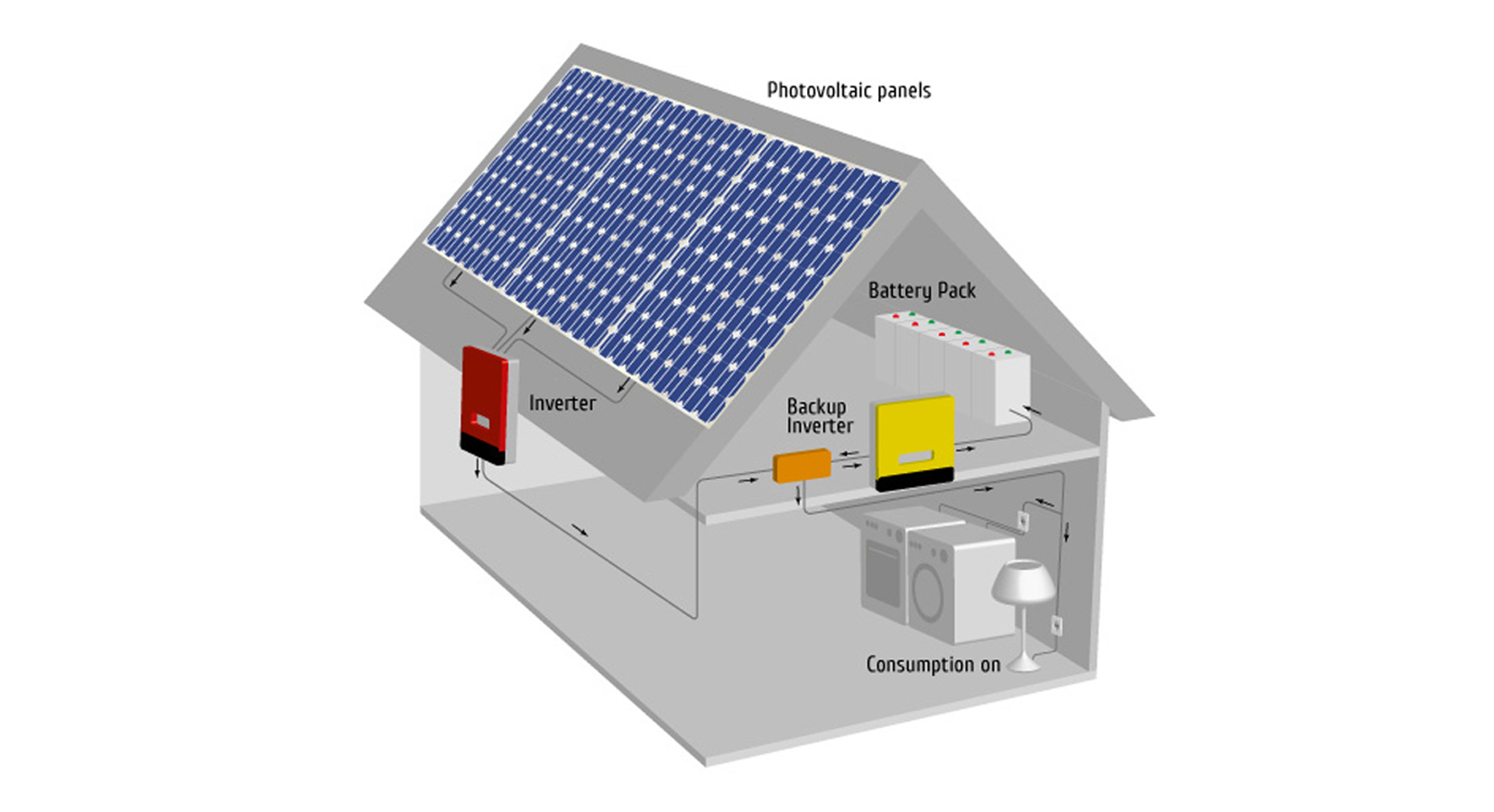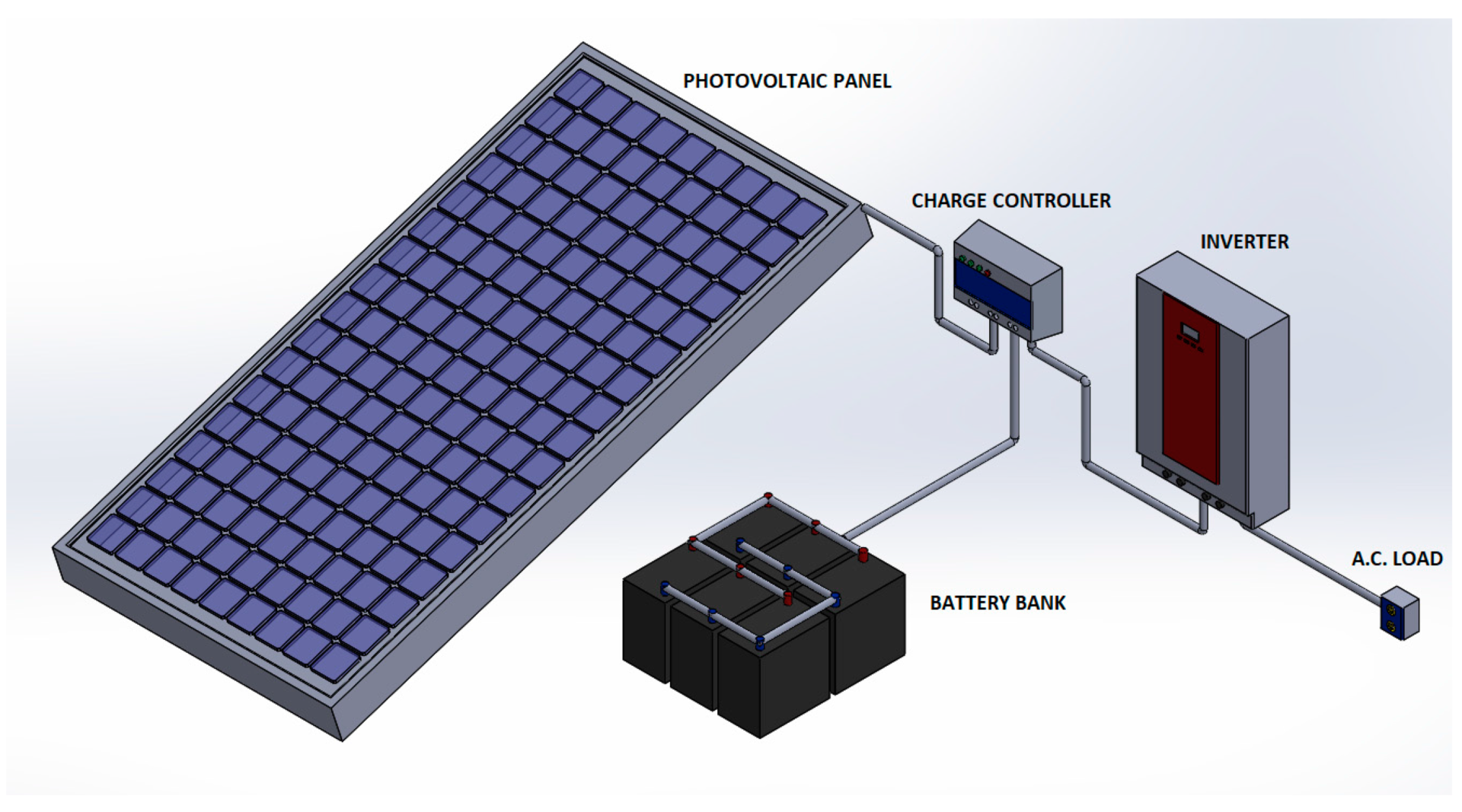Stand Alone Solar PV System Design is a great option for people who want to produce their electricity at home. They can be used by homeowners and small businesses who don’t have access to the utility grid, or they can supplement your current electric supply by providing backup power during outages. Stand Alone solar panels generate electricity stored in batteries and used when needed. These systems are also known as off-grid systems because they’re not connected to an existing electrical grid.
Off Grid Stand Alone Solar Power System Use as a Viable Source of Electricity
An off grid Stand Alone solar power system is an effective way to produce free energy on your property. The system uses the sun’s energy to charge a battery bank which powers the home at night or when there is no sunlight.
A typical off-grid solar power system consists of the following:
- A solar array that includes one or more panels, depending on how much power you need to generate
- An inverter/charger that converts DC electricity produced by the panels into AC for use in your home or business (inverters are required only if you’re hooking up to an existing utility grid)
A battery bank to store energy produced by the panels. A charge controller regulates how much power is fed from the solar array to the battery bank. A controller is required for safety reasons and can also help prevent overcharging. It monitors the battery bank and prevents it from being overcharged or drained too low by the solar panels.
Small Stand Alone Solar System is Reliable
Small Stand Alone solar system is a great way to generate electricity. They’re reliable, easy to install and maintain, safe and affordable. The fact that they’re stand-alone means that you don’t need the grid or another power source to use them. You can install one in your home or business and be completely independent of utility companies if there’s the sun shining on it! Solar power systems can be used for just about anything that requires electricity. You can use them to power lights, fans, radios and even televisions! You can also use solar power to charge your cell phone or other electronic devices.
Solar power systems are a great way to generate electricity. They’re reliable, easy to install and maintain, safe and affordable. The fact that they’re stand-alone means that you don’t need the grid or another power source to use them. You can install one in your home or business and be completely independent of utility companies if there’s the sun shining on it! -Solar power systems can be used for almost anything requiring electricity. You can use them to power lights, fans, radios and even televisions!
Stand Alone Solar Batteries are Easy to Install
Installing Stand Alone solar batteries are easy because you don’t have to work around the grid or connect with an electrician. All you need is a solar panel and the batteries themselves. Depending on your needs, you can set up the system outside or inside.
The basic steps are:
- Choose your solar panels and batteries.
- Install the batteries in a dry place.
- Install the inverter near where you’ll be using power from the system (e.g., inside your house). You can also install it inside the battery enclosure if there isn’t enough room for both outside of it; make sure not to get any wetness near them!
Once everything is connected, turn on all your equipment at once by plugging into an outlet or turning on something like a TV using its remote control until everything starts working correctly!
Stand Alone Energy System Is an Effective Way to Produce Free Energy On Your Property
A Stand Alone energy system is an effective way to produce free energy on your property. It can be accomplished by using solar panels to harness the sun’s rays and convert them into usable electricity, which you can then store in batteries for later use.
A typical Stand-Alone solar PV system will consist of the following:
- Solar panels (or photovoltaic modules) that collect sunlight and convert it into direct current (DC).
- An inverter to convert DC power from the solar array into alternating current (AC), compatible with most household appliances and electronic devices.
- Batteries used to store excess energy produced by your panels during peak hours so that it’s available when needed later in the day or night when there isn’t enough sunlight available for collection

Stand Alone PV System Is a Great Option for Many People
Stand Alone PV system is a great option for many people. They’re especially useful in homes and small businesses with limited or no utility grid access. Still, they can also provide an alternative power source for those who want to be independent of their local utility company.
Many people have saved money on their electric bills by installing stand-alone solar PV systems, with some even going off-grid entirely! Solar panels are the key component of a solar power system. They’re made of highly effective materials that can absorb sunlight and convert it into usable energy.
The electricity generated by solar panels can be used in several different ways, including powering appliances like lights and TVs and running small electrical devices such as fans and blenders. If you’ve decided to go solar, several different types of panels are available. There are also many factors to consider when deciding which type of solar panel is right for your needs.
Stand Alone Battery Provide Backup Power
A Stand Alone battery provides backup power but is also a great option for many people. A Stand Alone solar battery is easy to install and requires no additional wiring or equipment beyond what you already have. You can add one of these systems to your existing grid-tied system and use them independently. Solar panels are a great option for anyone who wants to go solar but doesn’t want to pay the price. They’re one of the most affordable ways to generate electricity from sunlight.
The most common type of solar panel used for Stand-Alone solar PV systems is a crystalline photovoltaic (PV) panel. These panels contain cells containing semiconductor materials like silicon or copper indium gallium selenide (CIGS). They’re connected in an arrangement known as a module and then installed on the roof of your home or business.
The efficiency rating is the most important thing to look for when shopping for a solar panel. The more efficient your meetings are, the more electricity they’ll generate. You can also look at their warranty period and ensure it covers all parts of their system, including inverters and installation materials.
Stand Alone Battery Systems Can Provide High Quality, Reliable Electricity
If you’re thinking about getting a stand-alone solar PV system, it’s important to understand the differences between grid-tied and Stand Alone systems. Both are great options for many people, but each has its benefits and drawbacks. Stand Alone battery systems can provide high-quality, reliable electricity for long periods. It is especially true if you live in an area with frequent power outages or want to avoid using fossil fuels as much as possible. However, they require additional maintenance, which means paying more attention to your batteries than if they were connected directly to the grid (but not much more).
The system works by storing energy when the sun is shining so that you can use it later. It will work with your existing solar panels, or you can add a new set of solar panels to ensure you have plenty of power available whenever you need it.
The main benefit of a Stand-Alone battery system is that it reduces your dependence on the grid, which means avoiding paying high electricity bills. In areas where power outages are common, it can be especially useful.
FAQS
Q: What is a Stand-Alone solar system?
A: A stand-alone solar PV system (or “off-grid” system) operates independently from any local utility and can provide all the power needed for your home or business. It doesn’t rely on the grid for anything except backup power in case of an outage.
Q: What are some benefits of having a Stand-Alone solar PV system?
A: People choose to install Stand-Alone systems for many reasons, including cost savings over time, self-sufficiency and independence from utility companies that may raise rates unexpectedly.
A stand-alone battery system is a great option for anyone who wants to be more self-sufficient. It will help you reduce your reliance on fossil fuels and can ensure that you have power when the grid fails.
Q: What common ways can people save money with a Stand-Alone solar PV system save money on their electric bills in various ways, including using solar power? If you have a Stand-Alone solar PV system, you can use its energy for free. If you have an off-grid system that includes batteries, you can store any excess electricity your panels produce and use it later.
Conclusion
In conclusion, Stand-Alone solar PV systems are a great way to produce free energy on your property. They are easy to install, reliable, and can provide high-quality electricity for long-period systems. If you have questions about stand-alone solar PV systems or want more information, please get in touch with them today! Grid-tie systems can provide a lower cost of electricity than traditional utility companies, as well as create additional revenue by selling power back to your utility company.



